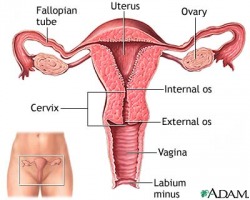UTERINE TUBE
UTERINE TUBE :POSITION AND RELATION
The two uterine tubes are each about 4 inches (10 cm) long and each connects to the outer part of the uterus.The uterine tube is divided into four parts:
1. The infundibulum, is the funnel-shaped side end that projects beyond the broad ligament and overlies the ovary.The free edge of the funnel has several fingerlike processes, known as fimbriae, which are draped over the ovary.
2. The ampulla is the widest part of the tube .
3. The isthmus is the narrowest part of the tube and lies just at aside to the uterus .
4. The intramural part is the segment that pierces the uterine wall.
FUNCTION
The uterine tube receives the egg from the ovary and provides asite where fertilization of the egg can take place(usually in the ampulla).It provides nourishment for the fertilized egg and transpors it to the cavity of the uterus.The tube serves as aconduit along which the sperms travel to reach the egg.
BLOOD SUPPLY
Arteries : The uterine blood supply from the inside iliac artery and the ovarian artery from the abdominal aorta.
Veins: The veins corresponds to the arteries .
Lymph drainage:The lymph vessels follow the corresponding arteries and drain into the inside iliac and para-aortic nodes.
Nerve supply: supplied by Sympathetic and parasympathetic nerves.

